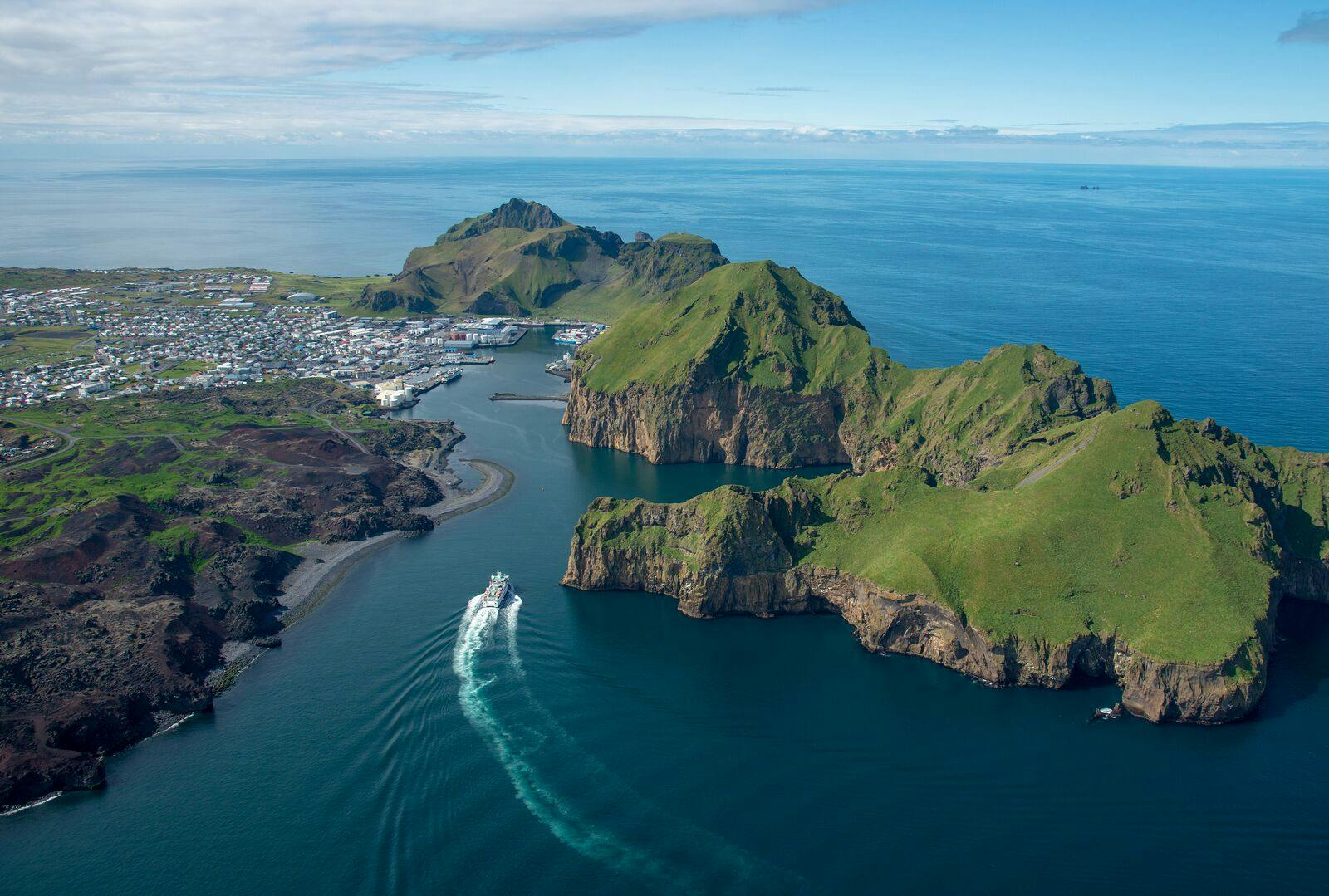
Its first total solar eclipse in 72 years is the perfect excuse to explore the breathtaking sights in the Land of Ice and Fire.
From active volcanoes and huge waterfalls to glaciers and geysers, Iceland has so much to offer before and after its total solar eclipse on August 12, 2026. Get up close and personal to Iceland’s dramatic, lonely landscapes with this guide to eight unforgettable places to see before and after totality.
Eclipse visiblity: 99% partial solar eclipse
One of Iceland’s most dramatic waterfalls, Skógafoss on the Ring Road in southern Iceland, is unmissable. Its spray means endless rainbows, and there’s a staircase on one side to get a higher vantage above it.
Book a tour to support eclipse2026.is

Eclipse visiblity: 99% partial solar eclipse
The first stop for most first-time visitors to the isolated island — and included on almost all tours — is its ‘Golden Circle’ sights of Þingvellir National Park, the Geysir geothermal area and Gullfoss waterfall. The day begins at Þingvellir, a UNESCO World Heritage Site, a natural amphitheater carved by Earth’s crust pulling apart, where Iceland’s national parliament was founded. Next, the Strokkur geyser (which gave all geysers their name) erupts reliably and dramatically every five minutes, blasting water 20–30 meters. Finally, the iconic Gullfoss, Iceland’s Niagara Falls, dumps water from the Hvítá River into a deep canyon.
Book a tour to support eclipse2026.is
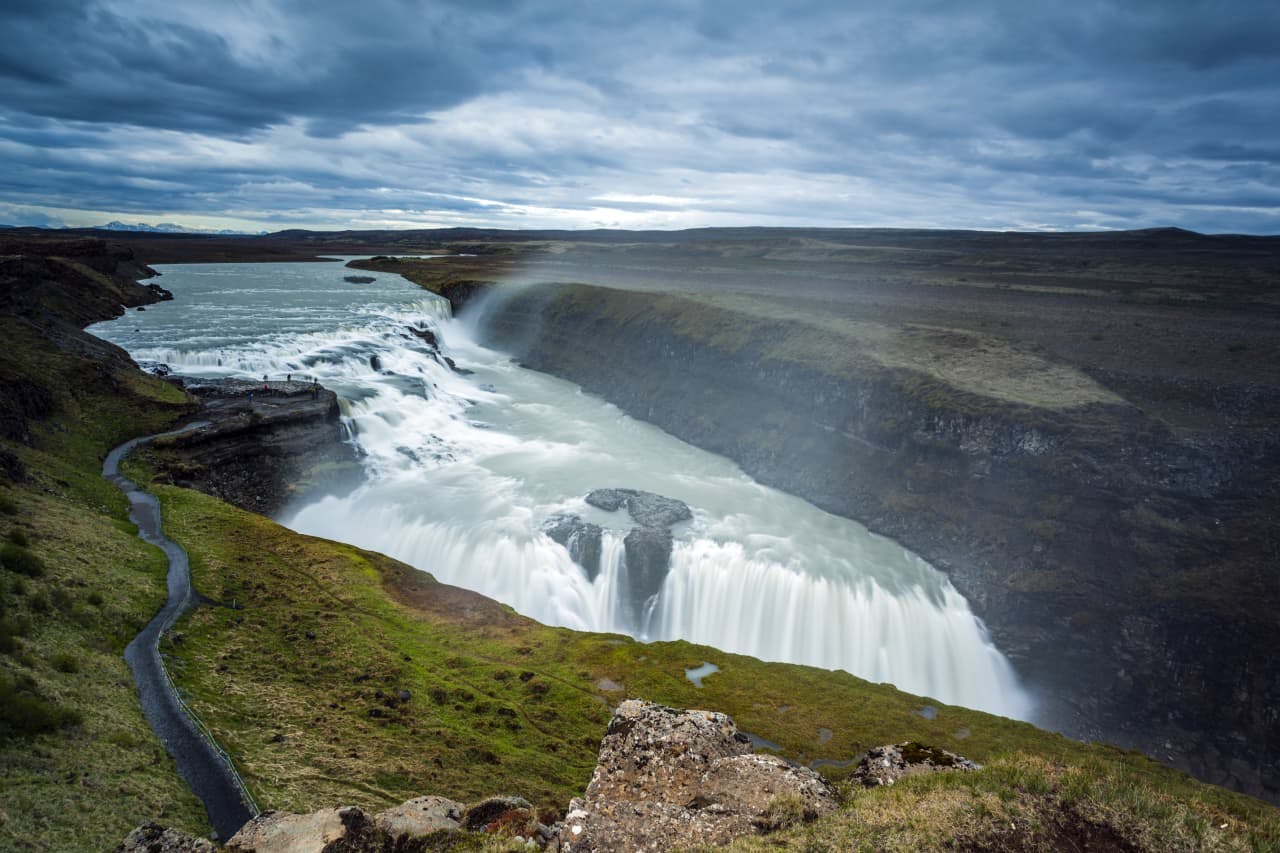
Eclipse visiblity: 97% partial solar eclipse
Watching icebergs drift out to sea from a glacial lagoon brings many visitors to Jökulsárlón, where a black sand beach nearby hosts the diamond-like remains of melting ice. If the crowds get too much, nearby Fjallsárlón is similar but quieter.
Book your tour to support eclipse2026.is

Eclipse visiblity: Keflavík, Reykjavík, Ólafsvík and Sandgerði are all in path of totality
Though you can go whale watching from Iceland any time of year, Humpbacks, Minke and Blue whales — among others —migrate to Iceland during June, July and August to feed in the nutrient-rich waters. You may also see basking sharks, white-beaked dolphins and porpoises. Trips go from Húsavík, Reykjavík, Akureyri, Ólafsvík, Dalvík, Sandgerði and Keflavík.
Book your tour to support eclipse2026.is
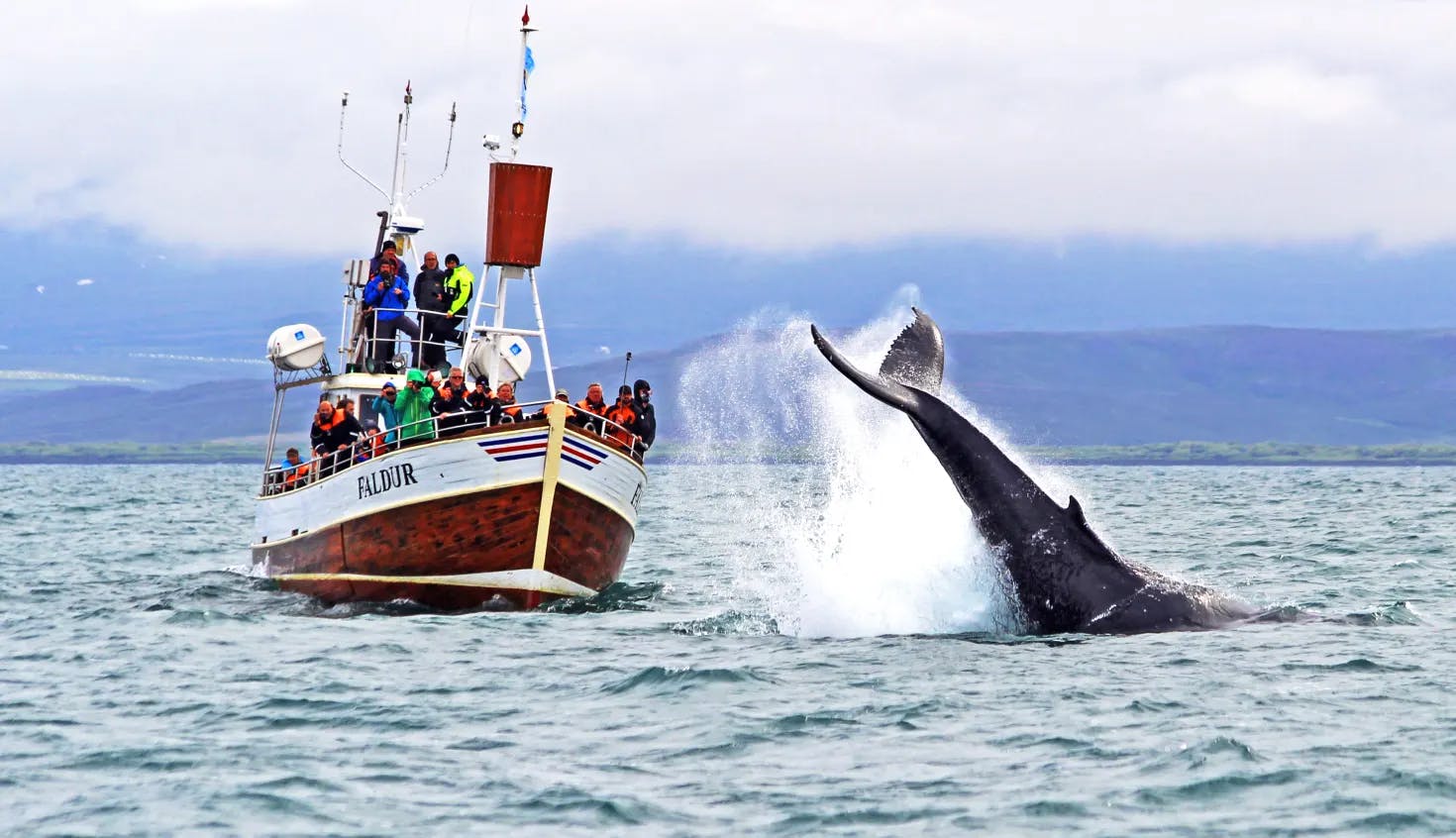
Simulatansaouly a luxury spa and a wonder of science, the Blue Lagoon is one of Iceland’s most iconic destinations. A geothermal lake within a lava field on the Reykjanes Peninsula, the mineral-rich, turquoise-blue hot water comes from the Svartsengi geothermal power plant next door.
Eclipse visibility: totality (1 minutes 32 seconds)
Book your tour to support eclipse2026.is
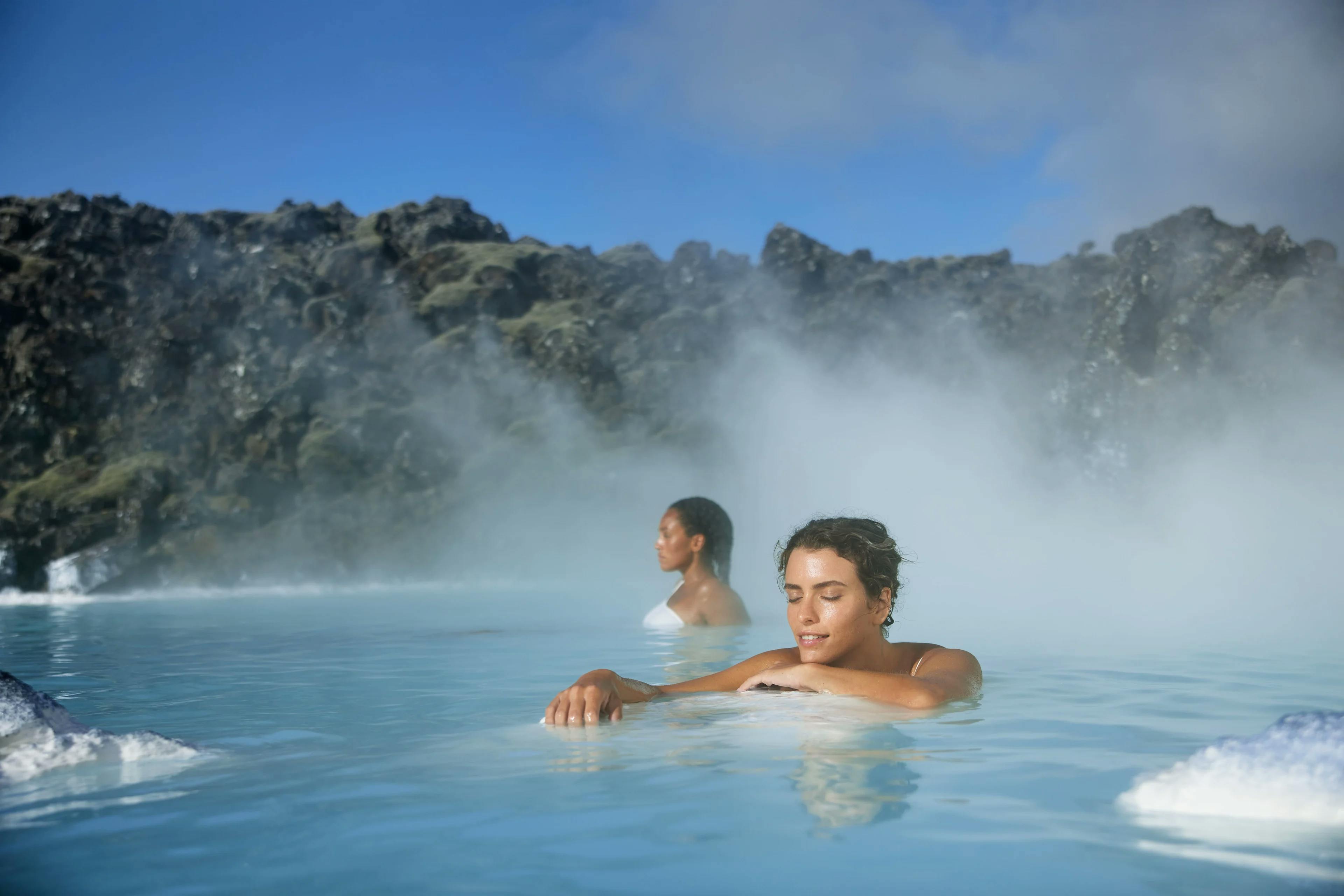
Known as ‘Church Mountain,’ this symmetrical peak on the Snæfellsnes Peninsula is Iceland’s most photographed. Combine it with the nearby waterfall, and you’ve got the postcard shot. Get there at dawn or dusk to avoid a press conference-like scene of jostling tripods.
Eclipse visibility: totality (1 minutes 51 seconds)
Book your tour to support eclipse2026.is
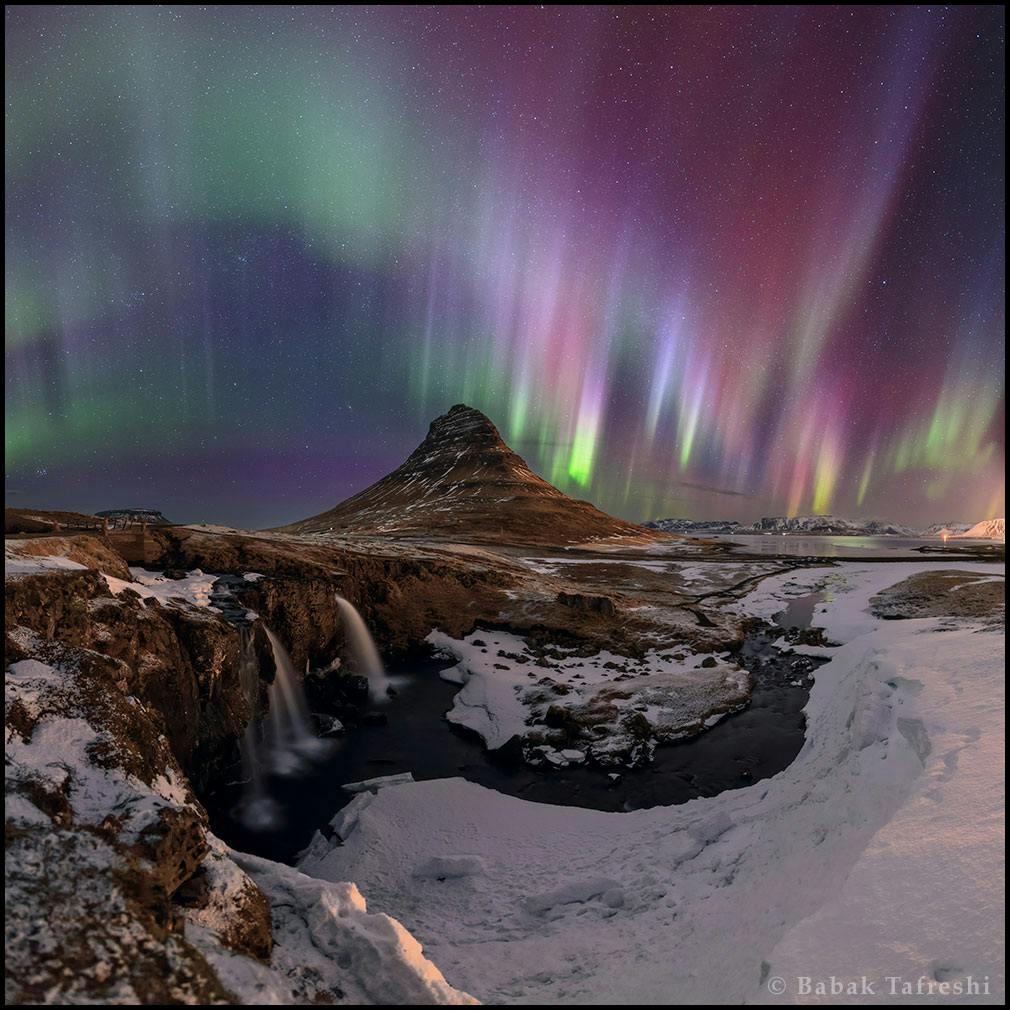
In a land of thousands of jaw-dropping waterfalls, a few stand out. At this unique double act in West Iceland, Hraunfossar spills straight through a lava field while Barnafoss churns violently through a narrow gorge. Together, they offer one of Iceland’s most photogenic and unusual river scenes.
Eclipse visibility: 99% partial solar eclipse
Book your tour to support eclipse2026.is
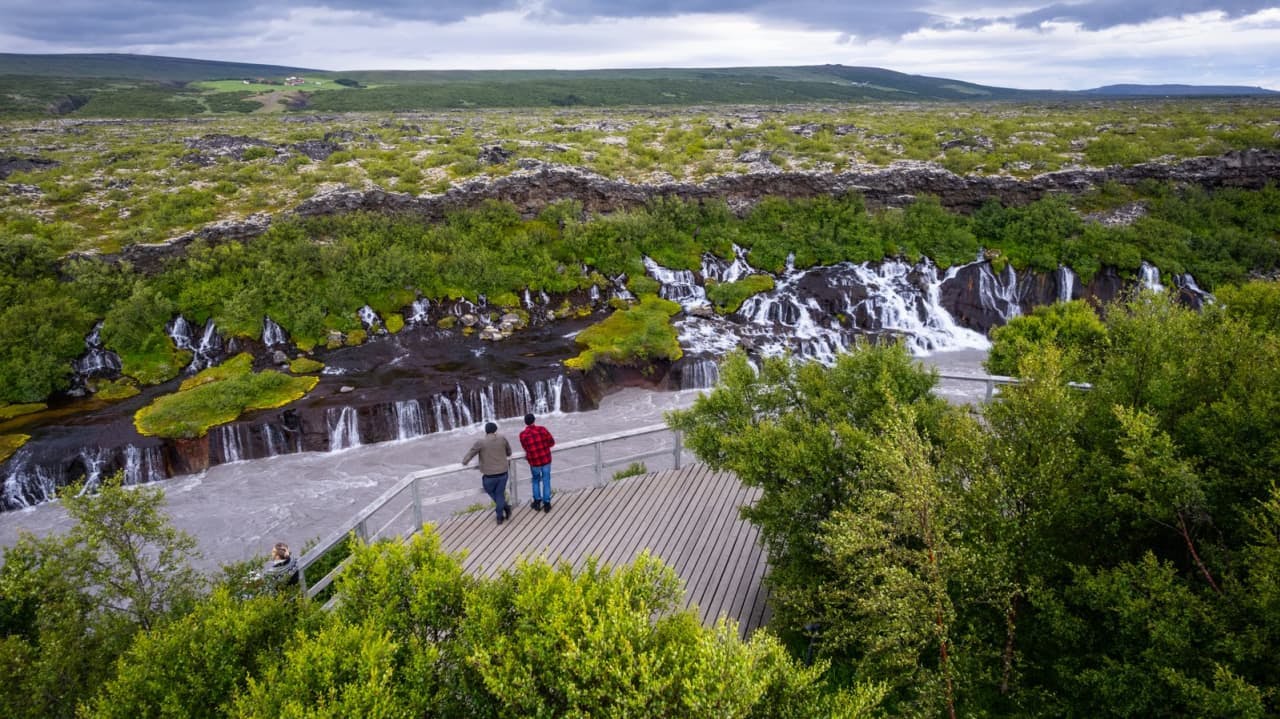
Take the ferry to Heimaey Island in Vestmannaeyjar (the Westman Islands) and find yourself in a puffin paradise — and a volcanic nightmare. The island’s rugged cliffs host Europe’s largest puffin colony from late April to the end of August. The peak season for puffin sightings is generally from early May to mid-August. Meanwhile, the award-winning Eldheimar Museum here tells stories from the devastating volcanic eruption in 1973, which destroyed 400 buildings.
Eclipse visibility: 99% partial solar eclipse
Book your tour to support eclipse2026.is

In Þjórsárdalur valley lies Gjáin, a fantasy-like pocket of greenery with trickling waterfalls and lava formations. It feels like you’ve stepped into a hidden oasis, and it’s no wonder it starred in Game of Thrones. Ideal for a peaceful walk or picnic just off the tourist trail.
Eclipse visibility: 99% partial solar eclipse
Book your tour to support eclipse2026.is
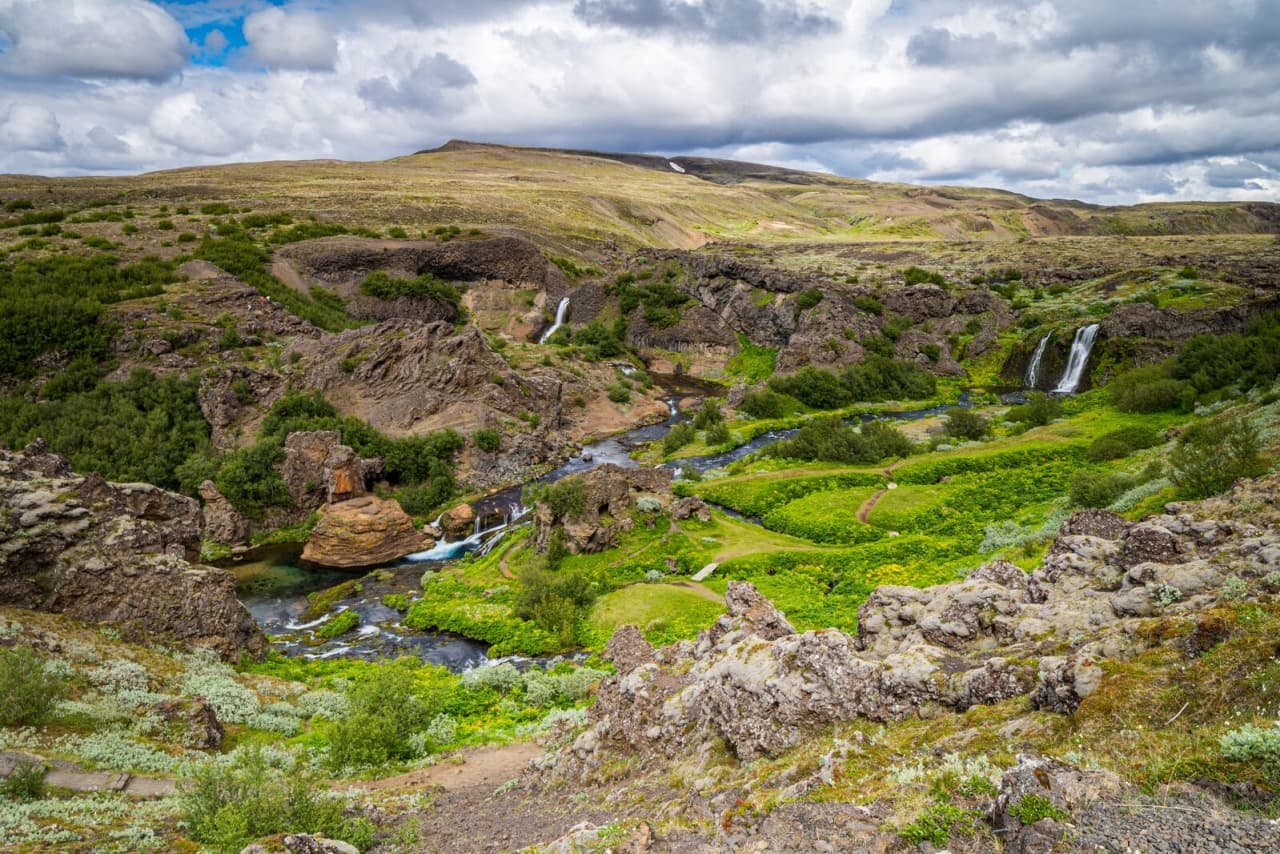
Just east of the Hekla volcano, this twin set of waterfalls on the Fossá river rewards those willing to venture up an unpaved mountain road. At 122 meters, Háifoss is among Iceland’s tallest waterfalls, while its neighbor, Granni, just adds to the drama — and you can get both into one shot. Expect misty rainbows and minimal crowds compared to some of Iceland’s waterfalls.
Eclipse visibility: 99% partial solar eclipse
Book your tour to support eclipse2026.is
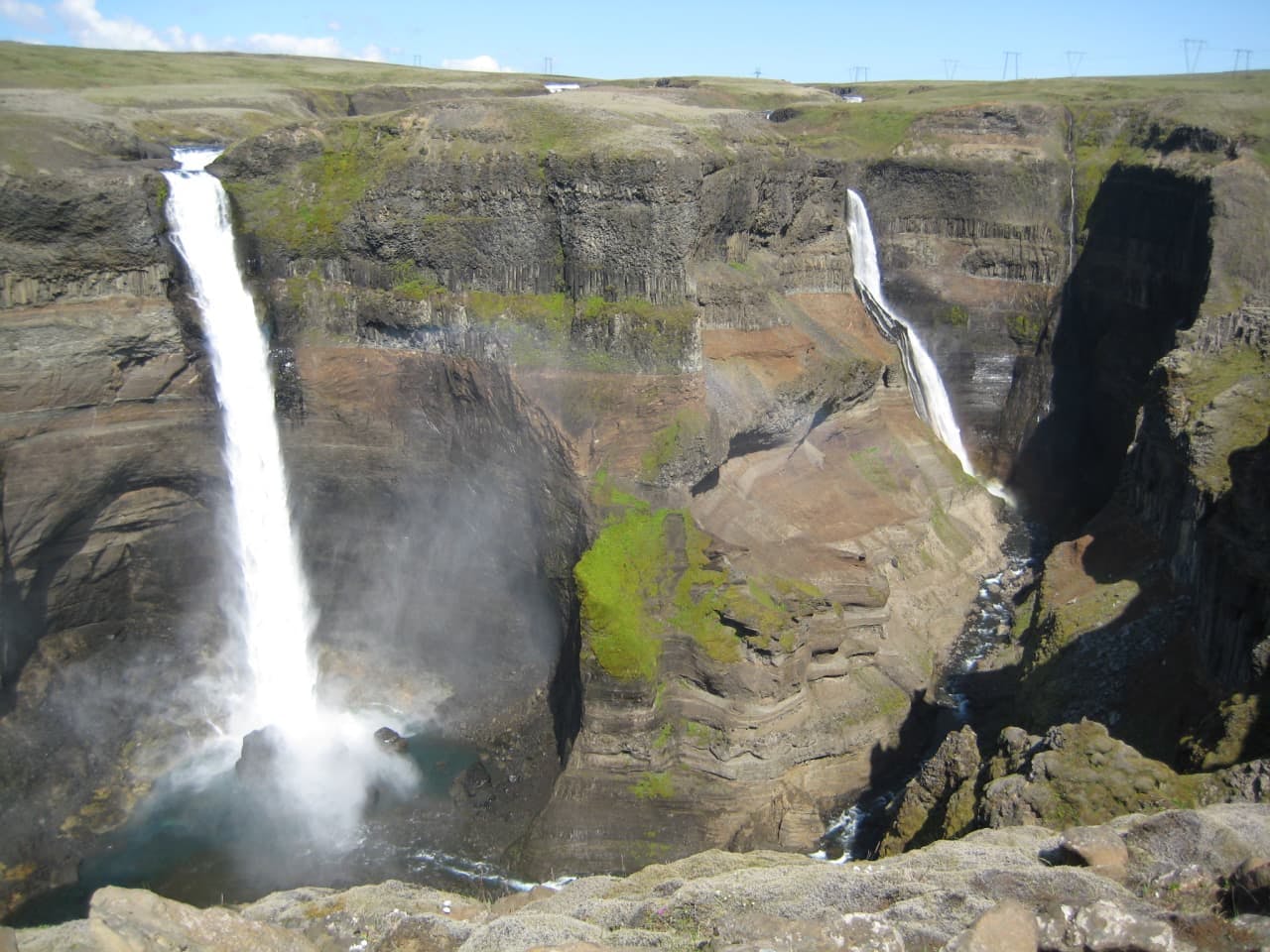
Jamie Carter is the author of Complete Guide to the Total Solar Eclipse 2026, The Eclipse Effect and When Is The Next Eclipse? A traveler’s guide to total solar eclipses 2026-2034